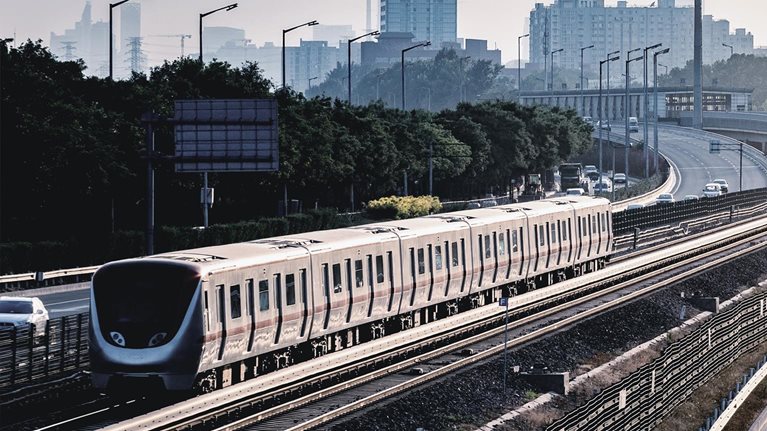COVID-19 has swept the globe in a matter of months, jeopardizing lives, upending businesses, and setting off a worldwide economic slump. While researchers work to develop a vaccine, with the threat of infection looming, consumers are newly refocused on health. We see this prominently in the mobility sector, with passengers largely favoring modes of transportation perceived as safer and more hygienic, such as private cars over ridesharing. Against a backdrop of mass layoffs, disrupted travel, and public-transit ridership down 70 to 90 percent in the world’s major cities, shared mobility—and mobility in general—is struggling. In particular, rumors of the demise of shared mobility are everywhere. Suddenly, private cars are in, shared rides are out, and the best-laid plans of mobility players appear to be in tatters. But are they really?
Developments in personal mobility have coalesced around four disruptions known as ACES: autonomous driving, connected cars, electrified vehicles, and shared mobility. However, since the global pandemic has far-reaching implications on consumer behavior, policy making, and regional trends, automotive and mobility players need to look beyond ACES to consider what will likely influence mobility’s “next normal.”
Understanding COVID-19’s lasting impact
Long term, COVID-19 could have a sustained influence on mobility, driving changes in the macroeconomic environment, regulatory trends, technology, and consumer behavior. Because virus-related trends can vary by region, the responses of mobility players and the outcomes themselves will likely differ by location as well. In this article, we describe what the next normal in mobility could look like and highlight the trends that will define the competitive and technological landscape.
1. More customers emphasize health, safety, and reliability
Cost and convenience have traditionally played key deciding roles when customers choose transport modes. Now reducing the risk of infections is the top reason many travelers make those choices, overtaking even destination time in importance (Exhibit 1). That holds true for both private and business trips. Interestingly, trip price has lost relevance, especially for private travel.

With the pandemic, health considerations are more important. Consequently, transport options that guarantee physical distancing will win out over others. In this environment, the use of private cars or biking, walking, and shared micromobility could outpace public transport. Of these, walking and biking are currently the most attractive options.
Based on a recent McKinsey survey of consumer-car-buying behavior during the pandemic, nearly 70 percent of mobility users in the United States, United Kingdom, Germany, France, Italy, Japan, and China said they would choose to walk or bike at least weekly even after returning to normal life (up six percentage points from precrisis levels). Likewise, private cars gained one percentage point (from 78 percent precrisis to 79 percent after returning to normal life). And, after intense drops in ridership, public transportation users will likely return to at least weekly usage, at around 40 percent. Moreover, shared micromobility, e-hailing, and carsharing should all be slightly more popular, gaining 1 to 2 percent postcrisis when normal life returns. Hence, the overall desire of customers to “move” remains intact.
What’s more, even a sizable increase in the number of people working from home would likely not affect mobility demand in the long term. In Germany, for example, even if the amount of people working from home once a week were to increase two and a half times, our analysis shows that it would only reduce the number of trips taken by 2 percent and the number of kilometers (km) driven by 4 percent.
Bigger changes are likely to occur with long-distance travel between cities. Here we see a substantial shift from the use of planes and trains to cars. About 40 percent of global consumers said they would fly less than before in the next normal, while only 16 percent said they would fly more often. In addition, 32 percent said they would travel by train less often (versus the 18 percent who said they would more often travel by train). By contrast, many more people, 32 percent, said they would travel more frequently by private car, while only 13 percent said they would travel less by car. Because of this, miles traveled on roads might increase substantially, at least in the aftermath of the pandemic. Whether this will have an impact on private-car ownership, affect car rentals, or allow clever shared-ownership models to prosper remains unclear.
2. Policy makers increasingly shape mobility’s future
Right now, governments around the globe are severely restricting mobility and overall lifestyle choices. However, in the aftermath of the most critical stage of the pandemic, regulators will likely increase their influence over mobility to either accelerate the disruption or slow it down.
As a means to stimulate the economy, governments could launch policies favoring low-emission vehicles or, by contrast, relax emission standards—as US authorities have done. The Chinese government recently extended its support for new-energy vehicles by exempting them from a 10 percent purchase tax and maintaining subsidies for Chinese-branded electric vehicles (EVs) until 2022. Likewise, Germany has increased its “environment bonus” for EVs to a maximum of 9,000 euros, paid toward the purchase of a new car. Governments are also expanding their favorable policies to eco-friendly travel beyond cars; for instance, Italy is offering its citizens a bonus of 500 euros for buying a bike, which has led to sold-out bike shops.
In some countries, the state might even extend its influence in the mobility sector by becoming a shareholder in struggling companies. One example of this is in the airline industry.
Cities and government planners are constantly making mobility decisions. They have to design car lanes, pedestrian walkways, EV charging infrastructure, and much more. As consumer behavior has shifted during the course of the pandemic, decision makers have increasingly put cities at the center of the discussions. We expect that the role of cities to foment change will only increase, as people become more interested and invested in the future of mobility.
Some recent examples:
- Milan announced it will transform 35 km (about 22 miles) of streets previously used by cars to walking and cycling lanes after the lockdown.
- Paris will devote 50 km (30 miles) of lanes usually reserved for cars to bicycles; it also plans to invest $325 million to update its bicycle network.
- Brussels has continued transforming 40 km (25 miles) of car lanes into bike paths.
- Seattle permanently closed 30 km (20 miles) of streets to most vehicles at the end of May, providing more space for people to walk and bike after the lockdown.
- Montreal announced the creation of over 320 km (200 miles) of new pedestrian and bike paths across the city.
- Berlin has repurposed some residential streets as “play streets” on Sundays during the lockdown and is also discussing the possibility of extending the program to other days of the week.
Such activities suggest that cities could become decisive actors shaping mobility’s future. Authorities could issue “license to operate” permission to mobility providers and take measures to encourage certain modes of transport they consider beneficial. For example, in partnership with a micromobility player, Portland decided to temporarily waive daily fees for e-scooters in exchange for the company’s offering of reduced fares. Similarly, the city of Rome has recently partnered with another micromobility player to launch e-scooter services in the city, promoting it as a sustainable and technologically innovative mobility solution.
Would you like to learn more about the McKinsey Center for Future Mobility?
3. Mobility goes hyperlocal
Urban mobility began organizing itself in nonstandardized ways worldwide before the COVID-19 crisis. COVID-19’s impact on the world economy has amplified regional differences, with variations on when the crisis unfolded and how health systems have coped. Many of these differences are likely to remain in the months ahead.
Based on our analysis of six major regions, we expect to see dramatic shifts in mobility modes all over the world by 2030 (Exhibit 2). For instance, we forecast a drastic decrease in private-car usage in some major European cities over the next decade, whereas in North America, private-car usage is likely to only decrease slightly. In greater China, we see a larger reliance on public transit and rail, while in major cities of South Asia, particularly those already dependent on public transit to a considerable degree, that is not likely to change significantly by 2030.

Consequently, depending on the way the pandemic plays out, how stakeholders organize their mobility strategies will vary markedly around the globe—and even from within countries. For example, a city that is an infection hot spot may need to enforce measures strictly limiting mobility, while other cities in the same region or country might operate similarly to precrisis days.
These differences could significantly impact customer demand and available travel options, potentially making mobility truly hyperlocal. Since city policies may vary widely, mobility players will need to tailor their key performance indicators to each city. This could, for example, involve an analysis of emissions regulations, risk of infection, and access to mobility. The pandemic could also become a catalyst for more changes, as cities pursue their own, largely uncoordinated agendas. As a result, mobility players will need to develop a regional and hyperlocal perspective on this emerging mobility patchwork, recalibrating their market radar to anticipate these developments early on.
4. Mobility also scales up
The COVID-19 crisis has exposed the vulnerabilities of certain kinds of companies and business models. We believe such weaknesses will spur industry consolidation. Economies of scale through consolidation might help to create more sustainable business models and, thus, a broader reach. Potential targets include the automotive industry as well as micromobility players, which began consolidating even before the spread of the virus.
One realistic scenario has tech players seizing the moment to secure their stakes in the mobility industry. They possess tremendous cash reserves, and COVID-19 did not hurt them as hard as the traditional economy. A potential secondary effect: cross-industry cooperation on new technologies could intensify as players pool scarce resources.
5. Innovation, refocused
The pandemic has compelled industry players to concentrate on their day-to-day businesses: closing operations, keeping workers safe and healthy, managing supply-chain disruptions, and ramping up production and services once again. However, after this period of crisis management, decision makers will likely want to focus on their innovation portfolios.
The industry’s concentration on EVs will likely survive and perhaps even intensify in some geographies. Demand for clean technologies will not disappear. We expect strong EV uptake globally, with sales increasing in China and Europe, given pro-EV regulations expected in the EU. On the other hand, some regions, particularly the United States, could also experience slowdowns in the long term, despite having shown strong recovery rates after the pandemic.
Companies may also need to halt or reprioritize other technology investments. For example, we could experience the increased cancellation or postponement of short-term investments in autonomous driving (AD), at least within the “traditional” industry. One tier-1 supplier has already deferred spending on Level 3 AD technology, while two premium OEMs have put their self-driving alliance on hold. Moreover, a North American OEM has delayed launching its commercial self-driving service until 2022 due to the impact of COVID-19 on the business environment and consumer behavior. Such delays could increase the gap between tech players (who lead the AD market and continue to push heavily) and OEMs, perhaps eventually excluding the latter from the autonomous game altogether.
In the midterm, development delays could add months to project timing. After that, the industry will probably see a partial consolidation, triggering an eventual increase in cooperative agreements.
In terms of connectivity, the ongoing consolidation in the startup- and software-technology space offers resourceful companies opportunities to acquire talent, players, or both. This is especially true for OEMs that are more likely to buy capabilities instead of building them in house. While hit hard by the lockdown, shared mobility’s future appears intact. Based on M&A activities, many expect the industry’s consolidation to continue—especially in micromobility. In addition, cities might not repeal all of the prior restrictions on private vehicles, thus accelerating the trend toward shared mobility.
In addition to the ACES trends, the crisis has hastened the industry’s digitization of core processes and sales channels, since e-commerce has become the main option to sell products and services under lockdown. Consequently, companies with digital channels seem likely to emerge from the crisis stronger than their competitors. Consumers now demand new business and sales models that reflect the post-COVID-19 world, such as long-term rentals and subscription services. Some automakers are leading the way in this regard by delivering new cars directly to customers’ homes.
Dealing with a topsy-turvy world
COVID-19 has turned mobility upside down. The implications of this crisis are profound and will remain long after the virus itself recedes. Mobility’s next normal will feature changing consumer behaviors, new roles for regulators, hyperlocal mobility, new forms of cooperation, and a changing focus on innovation. Given this uncertain environment, the need for a resilient business model and an agile organization will become even more important.
We believe the impact of the ACES trends will not slow down due to the pandemic. Traditional players need to stay in the game to avoid a diminished role in the ecosystem and missed chances to capture value. At the same time, players face increasing financial pressure and need to focus more attention on cash management. Cross-industry cooperation could be the key to attaining this balance.
Such teamwork could take different forms. For example:
Platform scale. OEMs use the existing platforms of “competitors” for new technologies. One example is the joint EV platform that two global automakers are developing.
R&D collaboration. Some automakers are pursuing joint R&D investments on ACES projects to share investment risk and accelerate development. Two European heavy-truck players used this approach to launch a fuel cell project targeting heavy-duty transport.
Investment consortia. Sharing capital expenditures for large-scale infrastructure projects makes sense. One commercial vehicle player is cooperating with an industry consortium in Austria to set up a system of fully electric last-mile delivery.
Supplier access to new customers and technology. The industry can use acquisitions and cooperation to support access to new customers and technologies, as one Chinese company did when it purchased a German automotive supplier’s rotating electrical-products unit.
Supplier consolidation for scale. Automotive suppliers can improve their margins on traditional commodity technologies by pursuing a “last man standing” strategy that can increase their market power. A major North American supplier is attempting this by acquiring its main rival.
The mobility ecosystem is rapidly changing as new agile ways of working and securing talent take hold. The crisis has massively speeded up decision making in traditional companies—a benefit that will likely remain long after the crisis has subsided.


